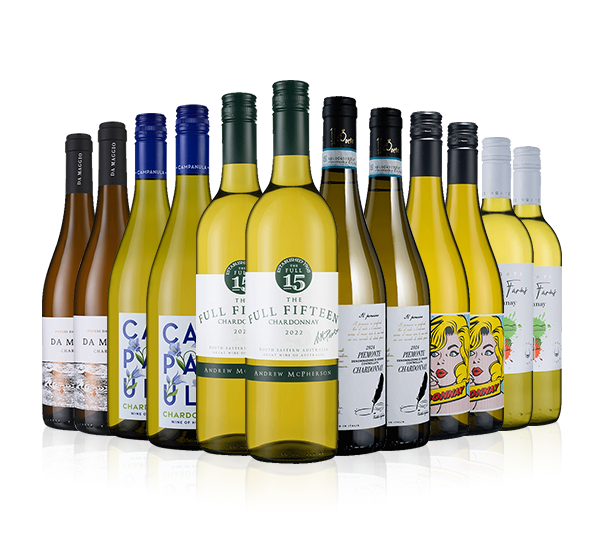Filter by
- Beautifully balanced, oak-fermented Chardonnay, with creamy peach fruit from a 5-star Cape producer£12.99 per bottle
- Fresh, fruit-filled Aussie Chardonnay with exotic notes of peach, mandarin and citrus£8.99 per bottle
- South Africa at its fruit-forward, freshest best! Chardonnay from a great cellar in Robertson£12.99 per bottle
- Bright, peachy, citrusy Chardonnay from top-value Portugal and an excellent winemaker£12.99 per bottle
- Outstanding, top-quality Chardonnay from award-winning winemaker Jeff Carrel. Rich, ripe and complex£16.99 per bottle
- A premium, Burgundian-style Chardonnay crafted by William Knuttel – a top winemaker of Sonoma£15.99 per bottleSAVE £4.00
- Ripe and full of bold fruity flavour, a Californian Chardonnay golden with sunshine£9.99 per bottleSAVE £4.00
- Luxurious rare parcel of 11-year-old, barrel-fermented Chardonnay from premium Hawke’s Bay£14.99 per bottleSAVE £5.00
- Opulent, creamy, oaked Burgundy-style Chardonnay from a golden-stone vineyard in the high Languedoc£13.99 per bottle
- Fruity and fresh Chilean Chardonnay from the 'Don' – one of our oldest friends in Chile£10.99 per bottle
- Crisp, apple-fresh Chardonnay from the Gourdon family, southern France, and an area deep in history£8.99 per bottleSAVE £5.00
- Creamy, peachy and lush – this is an indulgent Australian Chardonnay with a sunny citrusy zip£13.99 per bottle
- Opulent, lees-aged white Burgundy from a fourth-generation estate and the excellent-value Mâconnais£15.99 per bottleSAVE £2.00
- £119.88 per caseSAVE £38.00
- Fresh, fruity sparkling Chardonnay from the south of France, crafted by the Bréban family£8.99 per bottleSAVE £2.00
- Echoes of good Bourgogne Blanc, but hang on a minute – it’s Hungarian! Crisp, bright Chardonnay£10.99 per bottle
- Rich, oak-fermented, Burgundian-style Chardonnay from a South African legend£14.99 per bottleSAVE £3.00
- Exceptional, 92-point, Burgundian-style Chardonnay from a top estate in Oregon£29.00 per bottle
- From South Australia's cool-climate Adelaide Hills, a crisp, apple-fresh Chardonnay£24.00 per bottleSAVE £2.00
- A luscious, oak-fermented Chardonnay from this family-owned, trophy-winning estate£23.00 per bottleSAVE £5.00
- Seductively complex, oak-rich Marlborough Chardonnay from former Cloudy Bay winemaker Kevin Judd£33.00 per bottle
- A fabulous, 94-point Chardonnay from the brilliant Trinity Hill and the renowned Gimblett Gravels£31.00 per bottle
- Creamy, citrus-fresh Chardonnay with superb ripeness and zip, from one of NZ’s top wine families£17.99 per bottle
- Vivacious, mineral-fresh Petit Chablis from one of the region’s most decorated producers£15.99 per bottleSAVE £2.00































